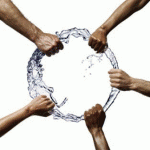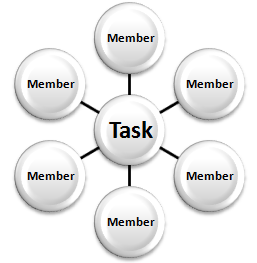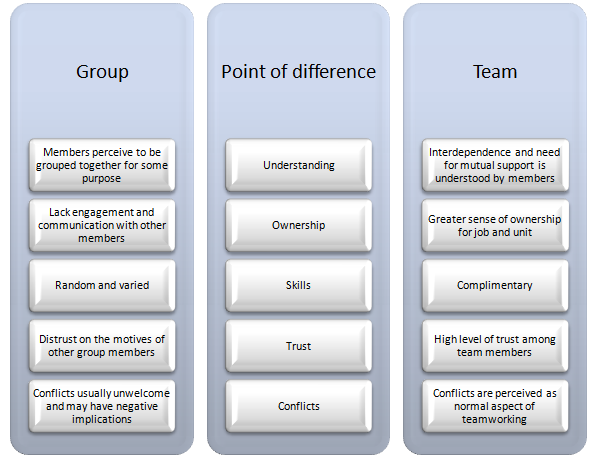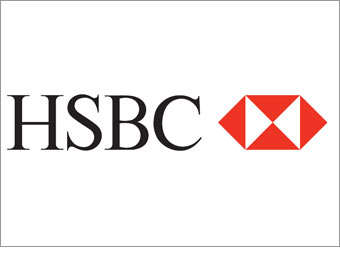Posts Tagged ‘teamwork’

There is set of factors that effect team functioning. These factors include, but not limited to the nature of group norms, the level of cohesiveness, team leadership, rewards and others. Group norms resemble a code of conduct that specifies the extent of acceptable behaviour within the groups. As an important factor impacting team functioning, group norms need to be formulated in a clear and straightforward manner. Moreover, group members need to be communicated about penalties for deviating form group norms. Group cohesiveness can be explained as the level of attractiveness of the group to its members and is a major factor impacting group functioning. Managers need to be focusing on increasing the levels of cohesiveness through associating being group members with personal and professional growth, as well as, a range of tangible benefits. Moreover, leadership plays substantial role on the effectiveness of team functioning. Team leaders need to be able to command respect from team members and they need to be emotionally intelligent as well. Importantly, team leaders need to be able motivate each member of team in personal levels. Rewards associated with team performance can be listed as another important factor impacting team functioning. Rewards to team members need to comprise tangible elements such as financial compensation and various perks, as well as, intangible elements such as celebration of achievement, recognition of contribution of each individual team member in formal and informal ways. Failure to achieve the positive impact of the factors listed above may cause the formation of dysfunctional teams that are not well positioned to achieve organisational aims and objectives.

Group has been defined as “an avenue through which group members experience mutual benefit” (Horn, 2011, p.214) and groups can be formal or informal. Teams can be specified as a specific form of group that aim to solve long-term problems and teams have a greater level of commitment to achieve common goals compared to groups. Therefore, it is important for managers to be transforming workforce groups into teams. Belbin’s Team Roles Theory specifies a set of different roles to be present in successful teams as plants, resource investigators, co-ordinators, shapers, monitors/evaluators, team workers, implementers, completer/finishers and specialists. Group behaviour can have positive, as well as, negative implications on the achievement of organisational goals. Positive implications of group behaviour on the achievement of organisational aims and objectives can be achieved through associating group identity with the achievement of those aims and objectives. In simple terms, in order to generate desirable group behaviour team loyalty to the achievement of organisational goals need to be increased through promoting relevant shared beliefs and improving overall organisational culture. Group behaviour can also have negative implications on a wide range of organisational processes. This can be expressed through resistance to change, lack of commitment to organisational aims and objectives and a range of other ways. It is critically important for organisational managers to adopt a proactive approach in terms of impacting group behaviour with positive implications on the achievement of organisational aims and objectives. References Horn, T. (2011) “Advances in Sport Psychology” Human Kinetics

Team life cycle to consist of the following stages: forming, storming, norming, performing, adjourning. All of these stages were passed by the team during the course of preparing the presentation and presenting it. 1.Forming. Five team members were identified. All of the members of the team had known each-other before the team project, however, team presentation had given team members a chance to know each other closer. 2. Storming. There were some arguments within the team at the beginning of the project when the team members were dividing the project into parts and distributing these parts to the team members. Moreover, opinions within the team differed about what company needed to be selected. However, disagreements were not serious, without any emotions attached, and came as a natural part of the project. 3. Norming. Towards the end of the first group meeting major points of argument were settled, company for the presentation was selected, and roles and responsibilities were divided among team members with everybody’s consent. 4. Performing. The team had several meetings and during each meeting a specific part of the work was completed according to the plan that has been formulated during the first meeting. Specifically, in this stage areas within the practice of Viva managers were formulated that needed to be improved as a result of the training and development program. Also, various training and development methods were reviewed to identify which of them were the most suitable to be integrated into Viva training and development program. As a result of the analysis and heated discussions within the team, it was identified that time management and team working were the skills that needed to be developed in Viva supervisors and managers. Accordingly, relevant training and development elements were selected presentation materials have been prepared. Roles within the…

Most people believe that every human being is equal and he/she is entitled to the same rights, privileges and opportunities, regardless their race, gender, faith or age. This fundamental belief changed the way management practices such as the recruitment, training and development of employees are done. In order to fully understand the benefits and disadvantages of multicultural workplace, first of all, the concept of diversity must be fully defined and understood. There are number of definitions for diversity: Diversity is a mix of people of different socially relevant group identities working or living together Diversity means any differences between people Diversity means differences of gender, age, race and ethnic group Diversity is state of being different Therefore, in a nutshell, diversity can be defined as that recognizing, appreciating, valuing and utilising the unique talents and contributions of all individuals regardless of age, career experience, colour, culture, disability, religion, speed of learning etc. Managing diverse workforce can help the company to expand its business and reach to minor communities as they can be able to understand needs of customers from different background. That is to say that diversity is opportunity focused and if managed effectively, it can: Increase productivity Reduce turnover Increase creativity and innovation Increase employee satisfaction Open new markets Further, diversity does not involve any legal requirements or is not implemented just to avoid lawsuits. On contrary, whether to implement diversity is at the discretion of the management. However, managing diverse workforce can be challenge too. If not managed properly, it can cause: Lower productivity Cultural misunderstanding Miscommunication Create conflicts Lack of teamwork

There are three different types of teams: problem-solving teams, self-directed work teams, and functional teams. Problem-solving teams involve sharing ideas and suggestions amongst members to a great extend. This type of team is used “temporarily in order to bring knowledgeable employees together to tackle a specific problem” (Pride et al., 2011, p.296). Self-directed work teams, on the other hand, represent teams that have been assigned tasks coupled with authority and skills to manage themselves. Members belonging to such type of teams found to be highly motivated and satisfied due to increased level of task variety and control over the job. An alternative variation of team is a functional team that is formed from employees belonging more or less to the same hierarchal level but, employed in different departments of the company. The main advantage associated with this specific team format relates to the fact that employees from various organisational departments offer varying perspectives on the issue, so that problems can be resolved with an increased level of efficiency (Steers and Nardon, 2008). References Pride, W.M, Hughes, R.J & Kapoor, J.R. (2011) “Business”, 11th edition, Cengage Learning Steers, R.M. & Nardon, L. (2008). “Managing in the Global Economy”, ME Sharpe

Specific features need to be present within teams in order for the team to be able to achieve its objectives efficiently. ‘Integrated Model for Team Effectiveness’ framework proposed by Reis and Geller (2010) can be used in order to explore this issue with sufficient level of depth. The framework specifies eight most important features of effective teams in the following manner: Purpose. Effective teams understand, share and value team’s objectives Strategy. The ways of achieving team objectives are clear to each team member Team roles. The existence of all needed roles such as shaper, specialist, critic has been ensured within the team Work processes. Efficient operating procedures are put in place that effectively contribute to the achievement of team objectives Team processes. There is a great level of respect, understanding and trust amongst team members. Engagement. High level of team engagement is achieved through effective utilisation of motivational tools Feedback and metrics. Objective and timely information is communicated to team members regarding the team performance and their individual performances Stakeholders. Appropriate level of interaction between the team and key stakeholders is maintained. It is important to note that all team members do not need to possess the same set of personal traits, skills and competencies, rather variety within the team is welcomed to an extent that it produces a balanced outcome that would allow the achievement of team objectives efficiently. Nevertheless, there is a common set of skills and competencies to be possessed by each member of team regardless their role and function within the team. First of all, each team member needs to possess effective communication skills in order to be able to formulate their viewpoint in an appropriate manner, an adequate level of cross-cultural knowledge is also important for team members taking into account increasing forces of…

It has to be understood that successful performance of a team can be achieved only after a specific period of time required for the group members to get to know and accustomed to each-others personalities working styles etc. Tuckman Theory for developing teams offers an effective explanation of this matter in the following manner: Different stages of Tuckman Theory for developing teams During the forming stage team members are introduced to each-other and team aims and objectives are communicated to them. This is followed by the storming stage that can be described as “the time when team members begin to realise that the task is different or more difficult than they have imagined” (Hass, 2011, p.62), and interpersonal conflicts may arise in the team, therefore this stage can be specified as the most challenging part of the team formation process. The norming stage relates to time when formal and informal roles and responsibilities have been set and agreed within the team and the actual team performing process has commenced. Performing stage, as the most desirable stage from management viewpoint involves team members feeling positive and excited about the teamwork. Some teams also face adjourning stage, implying the end of the teamwork.

It is important to stress that “the group definition describes the individuals within it as having a common interest, while the team definition describes the members within it as striving for a common goal” (Carter, 2009, p.4). Moreover, there is an individual accountability for group members, whereas the level of accountability for team members can be individual, as well as, mutual. Also, groups and teams differ in terms of creativity in a way that in groups creativity may be suppressed due to distrust and lack of communication amongst group members, while in effective teams high level of creativity is achieved through synergy and communication (Schermerhorn, 2011). The following figure illustrates the main points of differences between teams and groups: References Carter, M. (2009) “Unique Team Enhancement: All About Team Building and How to Build a Great Team” Dorrance Publishing Schermerhorn, J.R. Jr. (2011) “Introduction to Management” 11th edition, John Wiley & Sons

Team building blocks can be explained as foundations for effective teambuilding. The following most essential team building blocks are going to contribute to the success of HSBC customer service team: Appropriate leadership. Effective leadership practices are in place in HSBC derived from strong leadership of HSBC Group CEO Stuart Gulliver. Clear goals and objectives. Team goals and objectives to be developed according to SMART principle, the abbreviation standing for specific, measurable, achievable, realistic, and time-bound (Courtis et al., 2006) is going to contribute to successful team operations. Effective operating procedures. The latest IT facilities have been integrated within HSBC customer services and these make team operating procedures more convenient. Developing individuals. The issues of developing individuals are approached effectively by HSBC management with specifically designed ‘learning pods’ within some branches and a range of relevant programs available. Openness and confrontation. HSBC organisational culture is associated with openness to new ideas and viewpoints (O’Donnell and Boyle, 2008) and this may have positive contribution on new customer services team performance. Regular review. Regular individual performance appraisals and group performance reviews conducted at HSBC is going to serve as one of the important customer services team building blocks References Courtis, J., Ratcliffe, E.B. & Allsop, D. (2006) “The Bluffer’s Guide to Management”, Oval Projects O’Donnell, O. & Boyle, R. (2008) “Understanding and Managing Organisational Culture” CPMR Discussion Paper

Important features of successful teams can be specified as effective leadership, availability of resources, mutual trust, appropriate atmosphere, intensive communication, and clear goals (Marr, 2009). The following diagram illustrates the most common features and characteristics present in successful teams. References Marr, B. (2009) “Managing and Delivering Performance”, Butterworth-Heinemann
